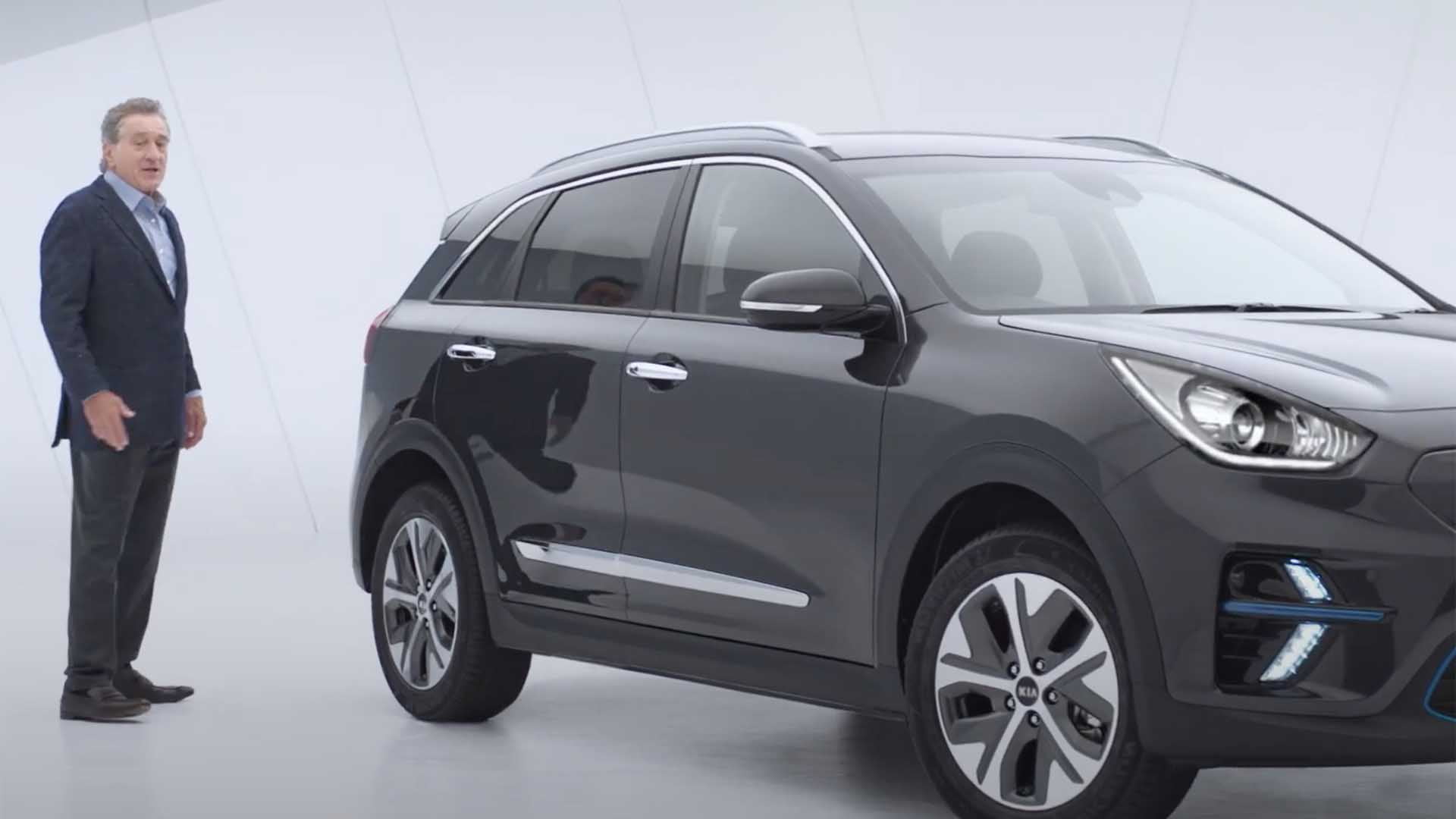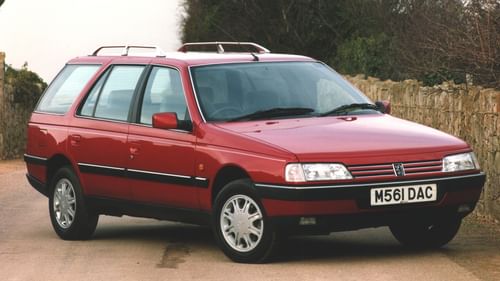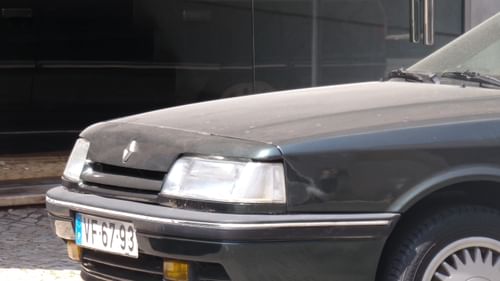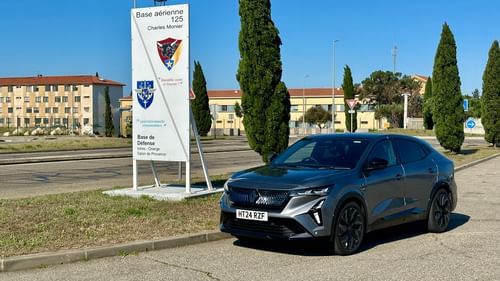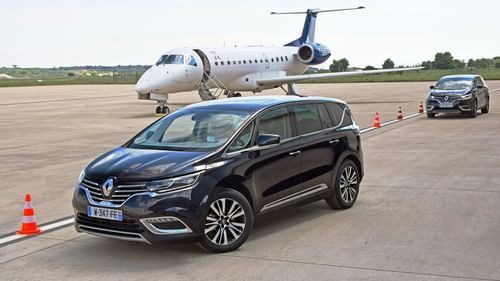Give my regards to the Renault 11 Broadway
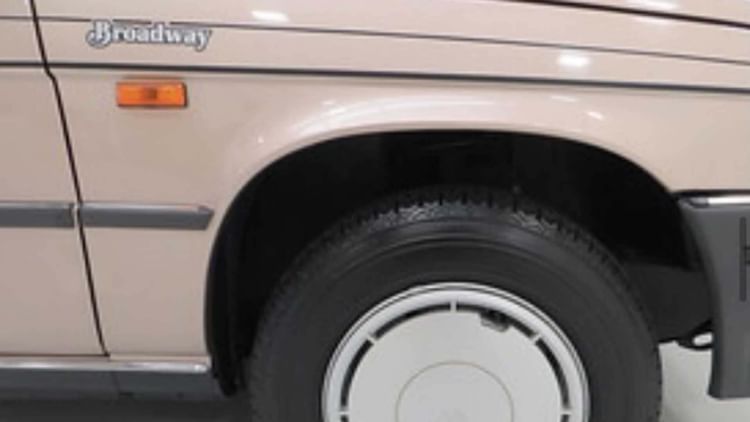
William Dickey checks in with some more musical words. The full title for his latest piece is: ‘Give my regards to the limited edition Renault 11 Broadway: a musical theatre workshop.’ (Sorry I had to shorten it - ed.)
Without further ado about nothing, how do you solve a problem like a Kia?
Younger readers can be forgiven for assuming that the " target="_blank" rel="noreferrer noopener">Kia Niro television car commercial currently doing the rounds is typical of the genre.
While educational insofar as it shows that the semi-eponymous Italian American actor is capable of a lot worse than his performance as Fearless Leader in Rocky and Bullwinkle, it is important also to hope that it represents a temporary nadir in the once proud discipline of automotive advertising. Because back in the day, car ads were epic. Rodgers and Hammerstein, Lerner and Loewe epic.
In this workshop, I’d like to look at how they brought a flavour of the West End to an otherwise oblivious demographic. Then, in cheap imitation Mark Kermode er, mode, analyse the basic structure of musical theatre to create a potential Olivier award winner using the most spectacular car ads from the last century. Readers who would rather pay four quid to stream Shrek than go and see a big Scottish guy covered in Swarfega on the stage should look away now.
Aston Martin Cygnet
A moment first to cover the really highbrow stuff.
Who hasn’t been tempted, after a bottle of overpriced Riesling and two packets of Niebelungen onion rings during the interval, to say “Stuff Wagner” and go home and watch the Transporter trilogy back-to-back instead? But forty years ago Fiat did a Queen’s Gambit for opera while trying to flog their Strada.
It is debatable whether the ad actually talked people out of buying Golfs and Escorts, but it did introduce many to the collaborations of Mozart and Da Ponte, whose Le nozze di Figaro, Don Giovanni and Cosi van tutti were, back in the day, the operatic equivalent of the Ford Galaxy, Volkswagen Sharan and Seat Alhambra.
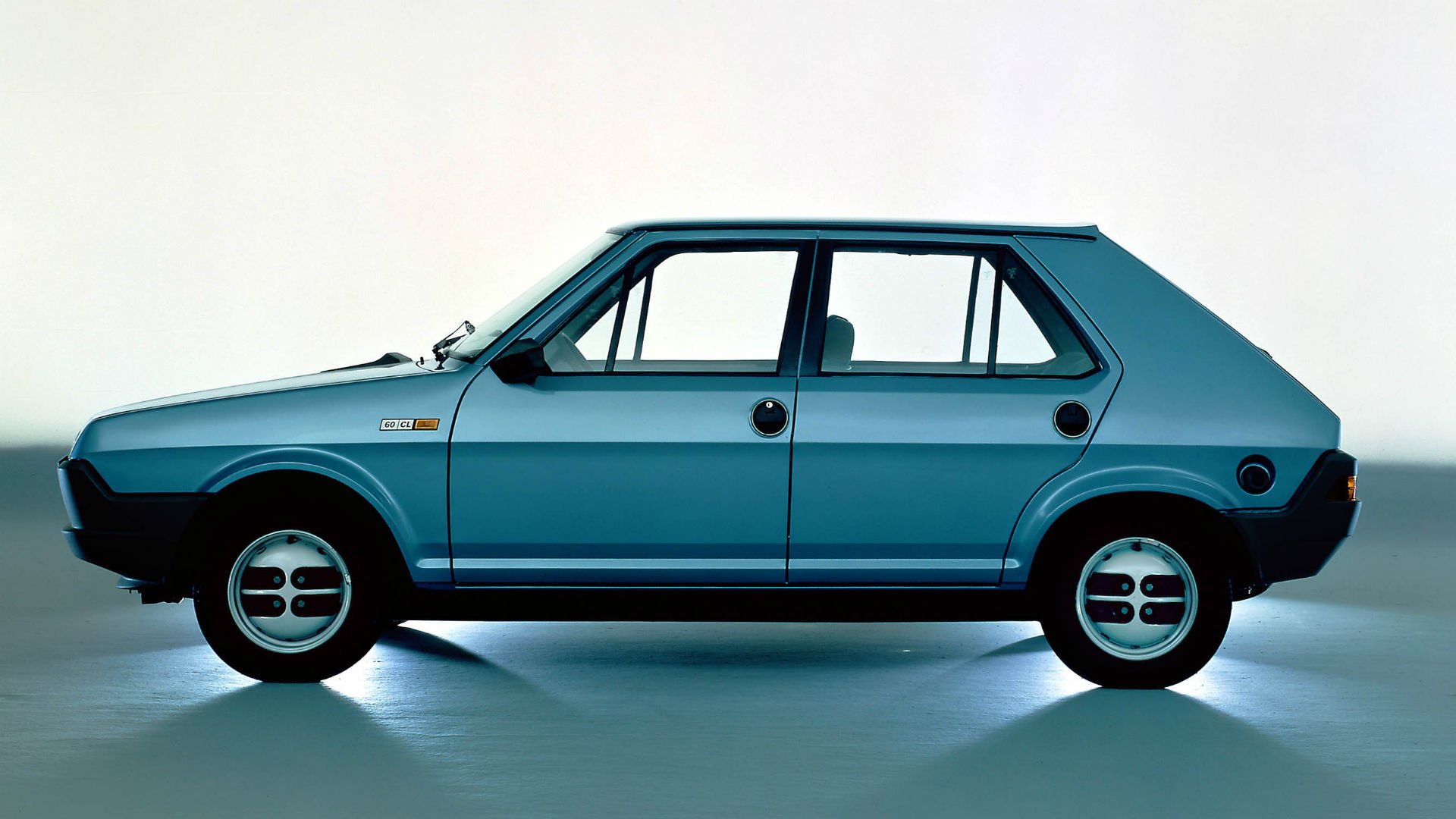
It may also have been the inspiration behind Nissan’s cute 1991 retro-styled saloon, the Dorma, but don’t quote me on that.
And fair play to Peugeot, who used the Swan theme from that Lake as the background music to a number of their ads in the 1980s. Curiously, no record of them seems to exist on YouTube, but Peugeot was good enough to add lyrics in English and, presumably, Philistine:
Look, look what’s new at Peugeot now
The Lion goes from strength to strength
And in the same way a whole generation thinks of the Lone Ranger instead of William Tell when they hear a certain tune, their Pavlovian offspring salivate and reminisce about 205 and 309 GTIs. Instead of anthropomorphic swans.
The Greatest Shogun
Once, musicals started with a plot and songs were hung around it. To pull the punters in, the reverse is now the case, as an in-depth study (OK, a fast forward through will do) of Mamma Mia! will confirm.
Let’s for this workshop propose a new production based on the music of Ford/Vauxhall/Chrysler and set it in one of those all-girl independent tractor servicing collectives, which were such a big thing in the late 20th century. Bear with me on this, because if Seamus Heaney famously compared his pen to a spade, the musical scriptwriter must be prepared to wield a crowbar.
Act 1 Scene 1
We need an overture, and nobody did overtures like Renault. Plenty of abrupt changes in tempo just to keep those feckers in the orchestra pit on their toes. In fact, let’s just keep overtures running through the whole thing and make them crucial to the plot.
The Renault 5 What’s Yours Called? medley is ideal. Because it turns out the new girl Alice Chalmers owns one and by coincidence all her colleagues too:
And when her best pal Maisie discovers in Act 2 that she’s pregnant with quadruplets (‘You’re gonna need a bigger car”) Renault once again:
https://youtu.be/z8ne-cjBrwA
The great thing about including the Renault 5 is that you can have Alice staggering into the workshop with blood dripping from both hands followed by lights out and curtain down on Act 1 Scene 1. Now you and I know that she has simply been trying to change the oil filter on her Five but there will be a brief frisson of shock among the lay audience setting them up for the horror in…
Act 1 Scene 2
Here’s the thing about musical theatre: one minute it’s a beautiful morning, and the next you’re off your head on laudanum hallucinating that the sociopath taking you to the social has murdered the nice lad who offered you a surrey with a fringe on top. Because things typically go pear-shaped in Act 1 Scene 2.
Alice has met Graeme, who works in a car showroom on the same industrial estate. She’s smitten, but her pals think he’s a wrong’un.
Alice dodges the issue, deciding instead to trade in her Renault for a car that you can perform basic maintenance tasks on without having to take the whole engine out.
Remember The First Class? One hit wonders with Beach Baby, establishing their motoring cojones with the observation that in old LA everybody drove a Chevrolet. In 1975 they released Life is Whatever You Want it to Be. The sentiment being totally at odds with actual life in the fairly terrible mid-70s, it went nowhere.
Until Vauxhall got hold of it:
This number is ideal for a stage adaptation. Note that at 0.36 it needs some of the cast to dress up as nuns, a mandatory feature of musical theatre from Sound of Music to Sister Act.
Bloody hell, the Chevette is a sporty coupe, a family saloon and a handy estate. After a sustained song and dance number involving geese, Alice is sold and signs on the dotted. As she observes shrewdly, life probably isn’t whatever you want it to be, but a rear wheel drive hatchback might just be.
Then a dramatic moment as she remembers her boyfriend sells Chryslers…
And here’s the performance to drag us screaming towards the interval.
The Candy Man Can was an iconic song in the various iterations of Charlie and the Chocolate Factory. Sung by characters that weren’t ever so slightly creepy or anything. And when Chrysler UK adapted the number to sell Hillmans, they went out of their way to out-Dahl Dahl. In fact, this piece is something Inspector Barnaby might dream after a big wine and cheese hosted by the artisans who make Midsomer Stench Extra Mature Blue.
There’s a weirdo who goes to church fetes wearing a giant papier-mâché head. A despised local businessman who flaunts his wealth towing a boat with his top of the range Chrysler 2-litre through the village. A couple in an Avenger who take the wrong turning at a T-junction, stop to get directions from one of the aunts out of Arsenic and Old Lace and a Midwich cuckoo, and are never seen alive again. And there’s Graeme, the Chrysler man, hoping to make Alice happy. Until she turns up for him in her brand new Vauxhall.
The date doesn’t go well, and back at the workshop Graeme starts talking about himself in the third person – never a good sign.
“You got big dreams. You want Graeme. Well, Graeme costs. And right here’s where you start paying.”
In the ensuing struggle, they end up on top of the cab of a Zetor. He trips backwards over the giant papier-mâché head he had been hiding up there and falls to his death by impalement on the three-point linkage below. And curtain.
The interval
So that the orchestra don’t get to disappear outside for a smoke, they will play the Leyland Cars theme for the duration.
&list=PLql_AK4g0OFM-Q384RcYB62q5Ej9carq0
The lyrics may have inspired the chorus of Life, by Des’ree, but don’t quote me on that.
Act 2 Scene 1
Alice remains traumatised by the events of the previous scene. Every time a Chrysler UK vehicle drives past she throws spanners at it and the collective have had to get rid of their beloved Commer pickup. Plus, she has done her back in trying to lift a gander over the high sill of her Chevette. To make matters worse, Vauxhall now freely admit that their hatchback was not up to scratch and have released proper estate and saloon versions. The Vauxhall Chevette hatchback, Alice muses, was a metaphor for life all along.
This is the bit in the show where we bring along Petula Clark. Ms. Clark, with that velvet-is-a-bit-pot-scourer-in-comparison voice, had previous form with Plymouth on the other side of the Atlantic:
https://youtu.be/-KmnpWtsTpA
She has called into the workshop to see if her John Deere is ready for collection and, in an inspirational song, persuades Alice that she can overcome adversity:
https://youtu.be/Z9Om9oOGh9Y
Alice is not convinced by the Sunbeam, another hatchback with a ludicrously high sill, but she suddenly realises that there is a Hillman Hunter parked outside and she doesn’t have the urge to take an angle grinder to its bodywork. She is ready to move on.
Act 2 Scene 2
She lands a job at the local Ford showroom. Which takes us nicely to a power ballad and a stunning finish.
How do we know that Brian May is a genius? Quite apart from his PhD thesis on the radial velocity of zodiacal dust particles, which is arguably a better way to occupy 134 minutes of your time than watching Bohemian Rhapsody, he was involved in one of the most epic car commercials of the 20th century.
https://youtu.be/LqTS5lYFL3s
And as well as the music, there is much to love in this video. From the initial bit preempting the opening credits of Westworld by three decades, to the mild peril as a Sapphire narrowly avoids a major collision thanks to its novel anti-lock braking system. And kudos to Ford for having the villain driving one of their own tractors.
Unfortunately the Mk4 Escort features a lot. If Ford Escorts were people, the fourth would be the one still living with his parents conducting a social media war against Daisy Ridley’s character in Star Wars: The Force Awakens. But with May telling you to go out and buy it, Ford were able to delay launching the Focus by at least two years.
Away from Ford, Driven by You did OK as a single in its own right:
https://youtu.be/qGDwug_OXxg
Not that an excuse is needed, but I include the official video here because May nails the Best Fourth Wall Moment Ever award from 1.38. Phoebe Waller-Bridge and Ryan Reynolds, eat your hearts out.
During this spectacular finale, we get our Greased Lightnin’ moment as Alice soars above the stage and away in her company Granada during an extended guitar solo. And curtain.
A barely plausible yet life-affirming plot? Check.
Hugely over budget due to expensive props (Renault 5 going down stairs, flying Granada), animal welfare (goose wrangler) and Petula Clark, which means it won’t turn a profit until at least 2053? Check.
Belters of showtunes which Elaine Paige can play every Sunday on Radio 2? Check.
Ladies and gentlemen, our work here is done.
In my next musical theatre workshop, I will look at the iconic dancing and singing number in Rupert the Bear: The Musical when Rupert, Bill Badger and Algy Pug are in the state penitentiary eating salt pork and molasses while Anna Mae Bullock stages a breakout. Please join me for Nutwood City Limits.
